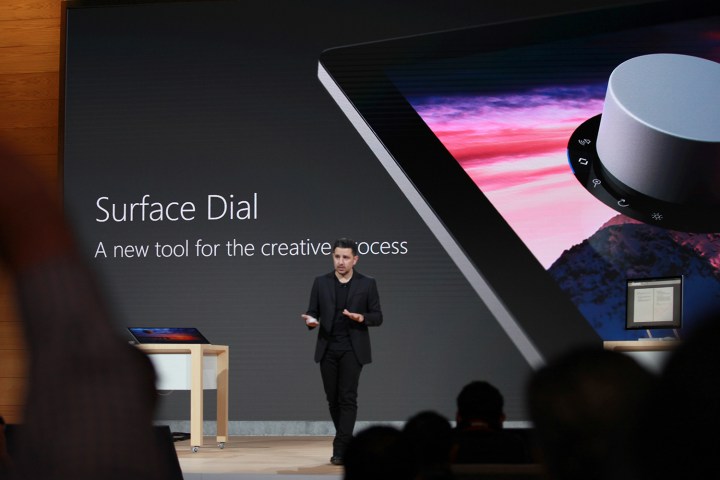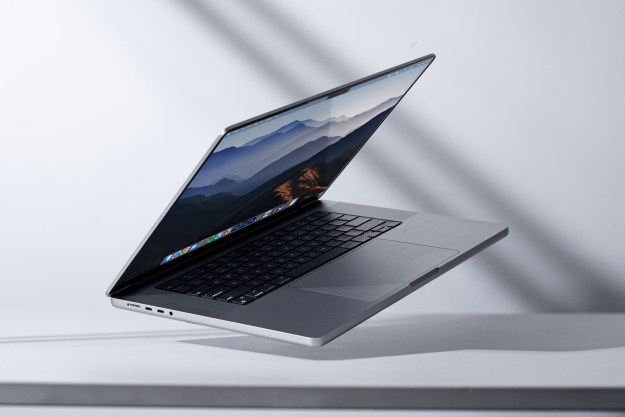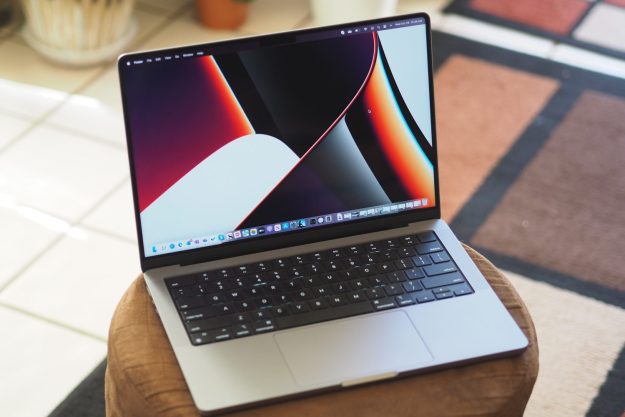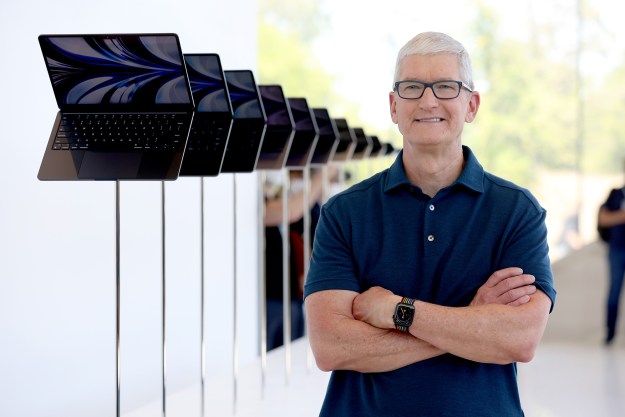
Clearly, Microsoft struck a chord with a lot of people.
The Surface Studio reveal was important because Microsoft designed something that’s not only different — it feels like the future. The Surface Dial alone is a truly innovative way to interact with a PC, and it actually has a function. It makes working with a PC more intuitive and natural for its intended audience, and that’s its only reason it exists, unlike some other ideas put forward this year (Touch Bar, we’re looking at you).
While Apple talks about how the Mac still matters, Microsoft is shipping innovative computers.
Apple clearly knows where its bread is buttered, which is why it hasn’t updated the Mac Pro. Microsoft, meanwhile, has boldly introduced a PC aimed at a very specific, and demanding audience. The Surface Studio isn’t for most people, which makes its existence strange. The folks in Cupertino would never build such a device, because the company doesn’t care about anything that’s not wildly profitable. There’s a cynicism to how modern Apple operates, one clearly rooted in concern for profit margins and stock values.
The result of that attitude is clear. While Apple CEO Tim Cook works to reassure his employees that the Mac still matters, Microsoft is shipping innovative PCs, building augmented reality headsets, and crafting the finest desktop OS ever made.
Microsoft isn’t selling mere products – it’s selling a vision
The Surface Studio serves as proof that the concept videos Microsoft has produced over the past few years, outlining its vision for the PC’s future, aren’t just pipe dreams. Microsoft is working to make those visions real. And it’s not just Surface Studio. Watch the video below, and you’ll see HoloLens-like mixed reality, a single operating system that runs everywhere, and more.
In short, Surface Studio, like the Surface Pro and Surface Book before it, demonstrates that Microsoft isn’t all talk. It serves notice that Microsoft is not only competing today, but it plans to dominate tomorrow – and it’s willing to invest in idea that may not have mainstream appeal to do it.
For example, Microsoft is active in the enterprise cloud with Azure, and in enterprise customer relationship management with Dynamics. It arguably dominates in business and consumer productivity software with Office 365 and has a host of successful cross-platform communications, cloud, and media products in Skype, OneDrive, Groove Music, and more. And, Microsoft remains active and innovating in console and PC gaming with Xbox.
Notably, not all these projects have been successful. Xbox is a great example. The Xbox One console was slammed for high pricing and mandatory bundled Kinect, and some speculated Microsoft would sell off the division. Instead, Microsoft went back to the drawing board and introduced new ideas like the Xbox Play Anywhere program, which lets players buy a game once for play on both Windows 10 and Xbox One.
And then there’s Windows. Windows 10 with the Anniversary Update serves as the foundation, a single operating system that can support every conceivable device. Windows 10 runs on desktops, notebooks, 2-in-1s, tablets, Internet of Things devices, Xbox One, Surface Hub, and HoloLens. While Microsoft had to walk back its goal of a billion Windows 10 devices by 2018, it still managed to create an installed base of over 400 million Windows 10 users in 15 months.
“Post-PC?” Microsoft didn’t get the memo
In short, Microsoft isn’t acquiescing to anyone’s idea of a “post-PC world.” Instead, it’s turning everything into a PC. Its vision is no longer merely a PC in every home and on every desk, but rather a PC (and a Microsoft service) for everyone no matter where they’re working or playing.
Microsoft executives often used the word “transformation” throughout 2016, and that’s precisely the right word. What was for decades the “Windows company” is successfully transforming itself into the “cloud-first, mobile-first productivity solutions company.” Remarkably, it’s maintaining its profitability while doing so.
Much of Microsoft’s strategy throughout 2016 revolved around business customers, both small businesses and the enterprise. Its $26.2 billion acquisition of LinkedIn, for example, was a move aimed at giving the company access to a solid database of corporate users, and linking them with its Office 365 and Dynamics products.
But for all its apparent focus on the enterprise, Microsoft clearly remains committed to providing great experiences for consumers, as well. You need to look no further than the company’s commitment to making Xbox the best line of gaming consoles – including the extremely powerful Project Scorpio teased at E3 2016 for release in 2017 – and making Windows 10 the best OS for gaming PCs.
Here, Microsoft seems to be wary of making the mistake of older technology giants like IBM, which faded out of the public eye when it ditched its consumer computing business. IBM still does important, innovative work, but most people don’t know of it, and its impact is less direct.
Microsoft’s great year leaves it poised for another great year
There’s more that we could talk about to support our contention that 2016 was a very good year for Microsoft. There’s the Universal Windows Platform, which lets developers write one app that can run on any Windows 10 device. There’s Microsoft’s commitment to supporting open source software. There’s the company’s artificial intelligence investments, which promise to lead the way in practical AI initiatives.
Microsoft isn’t acquiescing to the idea of a “post-PC world.” Instead, it’s turning everything into a PC.
And we haven’t even touched on HoloLens, Windows Holographic, or the Windows Insider program. There’s really just one problem: the near-death of Windows Mobile. But that had failed before the year began.
What we have covered here is more than enough to showcase Microsoft’s incredible year. While many other companies have significant impacts on technology, none have pushed the envelope in so many ways, conducted so much important basic research, and transcended mere product and service development, as has Microsoft.
Redmond has learned that innovative work often pays off, even if it’s not immediately profitable. Its commitment is beneficial not only for the company, but for everyone who uses a PC.
Editors' Recommendations
- A Redditor ‘didn’t know’ about the Steam Deck, so they built their own
- The MacBook Pro we all want is still many years away
- Apple’s ‘foundational’ Vision Pro tool was secretly built 6 years ago
- We now know why Apple’s Reality Pro headset was delayed
- We now know how Apple’s VR headset may handle video, and it’s pretty awesome


